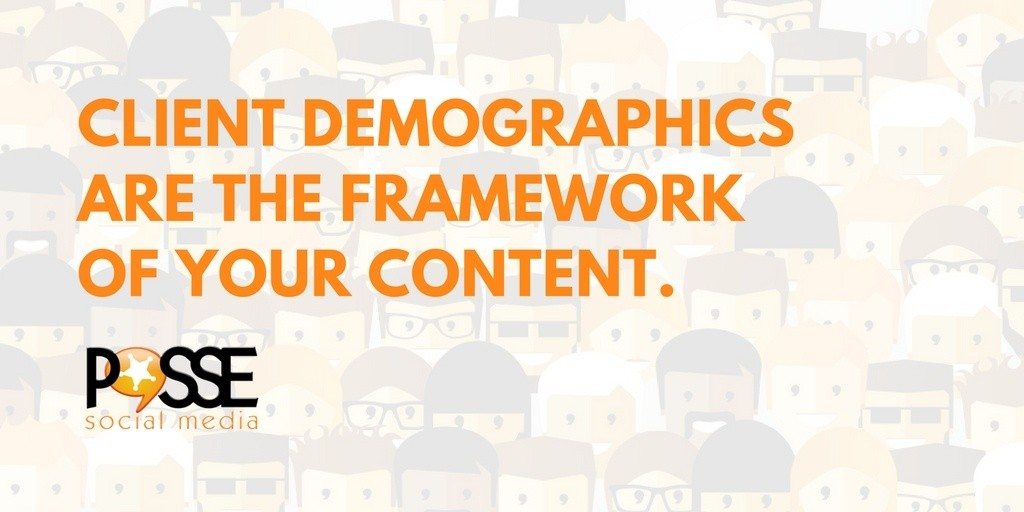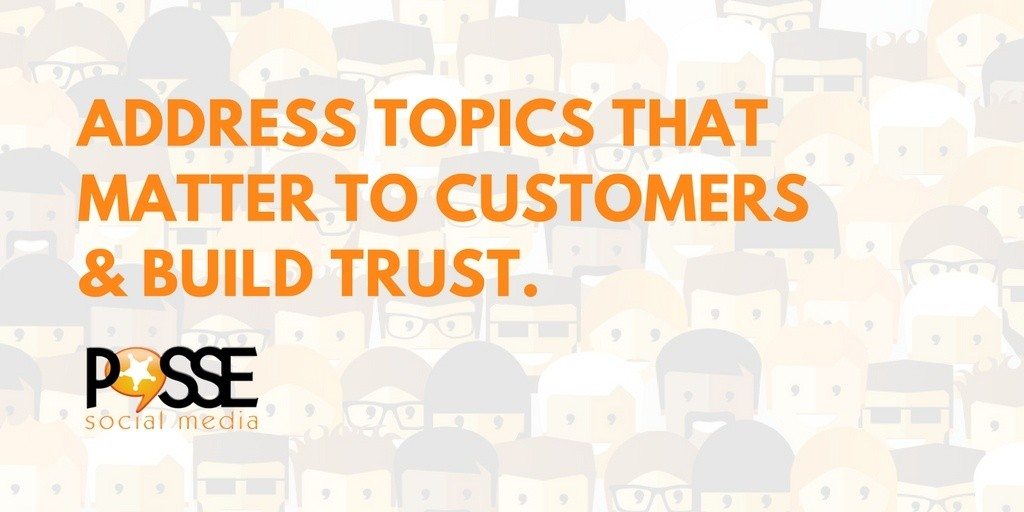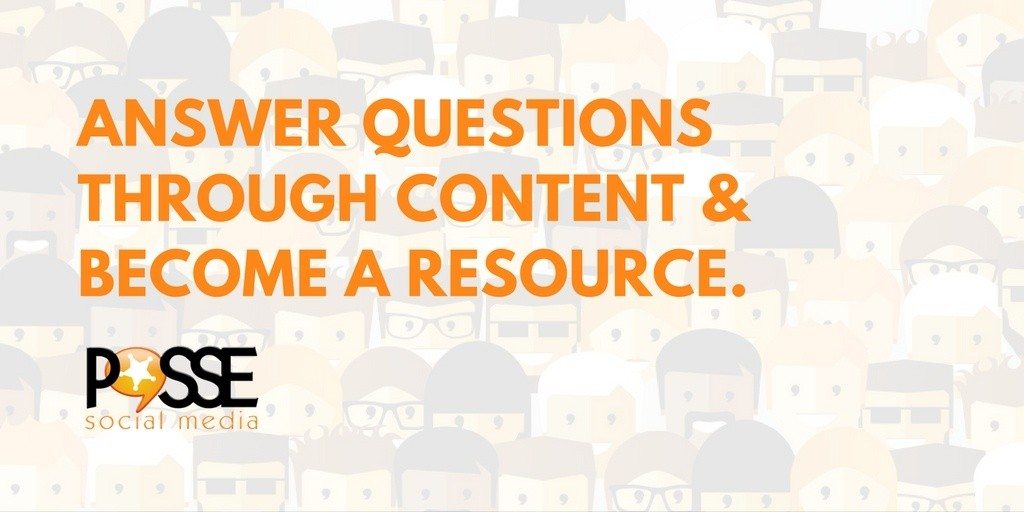Buyer personas are really the heart of any digital marketing strategy. When you know who your ideal customer is, social media content is easy! Well, maybe not easy, but definitely more straight-forward and focused. Why? Well, if you know who you’re trying to reach you’re able to tailor a business message that matches their interests, provides solutions to their needs and answers their questions.

One of the biggest content mistakes you can make as a business is not getting to know your buyer persona(s). This can actually do a lot of damage to your online and offline reputation if you think about it.
Like many on the Posse team have talked about in previous blog posts, the purpose of inbound marketing, and social media as a piece of the pie, is to build companies (your company) as the experts in their industry. If you don’t have your buyer personas in mind when creating content, chances are you’re not going to be seen as a trusted resource.
The good news is that you can adjust your social strategy and keep moving forward! Here are three buyer persona areas you might be ignoring and what you can do about it:
Persona Mistake 1: You Don’t Know Your Client Demographic
Understanding your customer demographic is kind of like knowing everything about your best friend. Think about it. You know what they’re interested in, the kinds of movies and music they like; you can even finish each other’s sentences. Alright, maybe that’s taking the customer relationship a little far, but you get the idea. Quality over quantity is an excellent rule to go by. With the newest update in Facebook’s algorithm, informative and entertaining content matters more than ever.

When you don’t really get to know your ideal customer, there’s no way you’re going to be able to produce content they’re interested in or want to engage with on a regular basis! Let’s be honest. We need that engagement (particularly shares) in order to beat the algorithms on social platforms. Client demographics will frame the following when it comes to content:
- Types of information you share
- Branding / font choices
- Types / placement of ads
- Content tone
- Posting times
- Platform usage
- Posting frequency
- Types of offers (inbound marketing)
The list could go on, but you get the idea. If those listed items look like they’re part of a social media strategy, that’s because they are. All these pieces of information should be taken into account in order to maximize digital success, but it’s going to be hard if you don’t know your customer!
Persona Mistake 2: You Don’t Understand Their Situation or Business
What problems do your customers face on a daily, weekly, or monthly basis? If you don’t understand your customers, how can you possibly address topics that matter to them? I’m a fan of Mark Schaefer’s quote, “Build trust, not traffic.” People want to buy from companies they can trust, but in order for that to happen you need to understand what they need.
- What are people looking for? This is a great time to dig into your CRM (Client Relationship Management) and take a look at both clients and prospects. Need another reason why this is a good idea? Check out HubSpot’s 4 reasons why you should be using their free CRM software!
- Segment your clients! This is part of creating your buyer persona. As a business owner, you know that not every customer is the same. Needs can vary but there can be 3-4 strong ideal customers (or more depending on your business) that create a pattern. Start breaking down those consumers into categories and be able to answer their questions. Or better yet, answer questions before they’re asked.

Your clients shape the content. Get to know them and use your business as the client-reaching resource it is. Most importantly, whether the content is on a static web page, a blog, or a tweet, you want to be answering questions. This brings me to my last point:
What does your buyer persona want to know?
Persona Mistake 3: You’re Not Answering Their Questions
Take a look again at Persona Mistake 2. What kinds of questions are asked in communication with prospective clients? What questions do you receive from current clients? This is a good place to start. If you’re struggling with ways to communicate the answers to those questions, here’s a list of ideas:
- Blog: Did you know that according to HubSpot, Marketers who have prioritized blogging are 13x more likely to enjoy positive ROI? Your website needs one anyway, so let your company voice be heard!
- Video series: Content topics can be distributed different ways. Maybe your demographic responds better to a short clip, so keep your target audience top of mind.
- Facebook Live: What better way to drive interaction, put a friendly face with your company, and answer questions all at the same time!
- Podcast: Quick, convenient, and no camera necessary.
- Case Studies: Show how you’ve helped a client
- Offers: These could be a brief consultation, whitepaper, short but informative SlideShare, an engaging infographic, or an educational event.
With all these great options on ways to answer client questions, it’s important to note that different kinds of information are going to resonate with people based on 1) demographics and 2) where they are in the “Buyer’s Journey.” When it comes to your business, you’re the expert. We say this to our clients all the time! Showcase that expertise by answering questions and, ultimately, building trust.

When you don’t take the audience into account, you run the risk of poor social engagement at best, and coming across like you don’t care at worst. Yikes! Neither is a good option. Better, client-centered content simultaneously builds authority, engages your audience, and communicates care. By becoming a brand that people trust, you set your company up for success.
